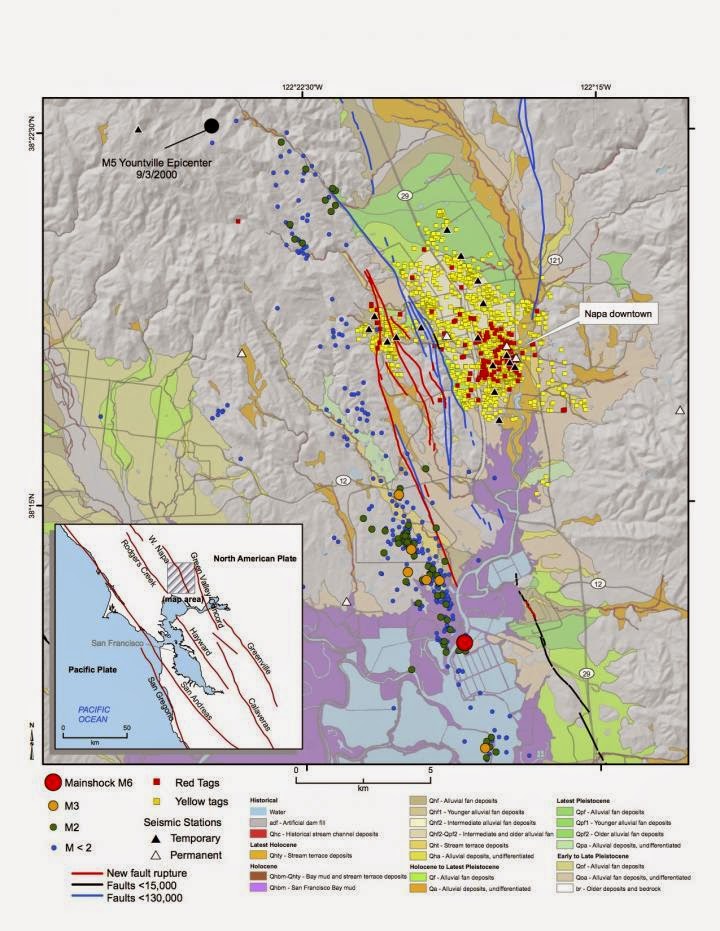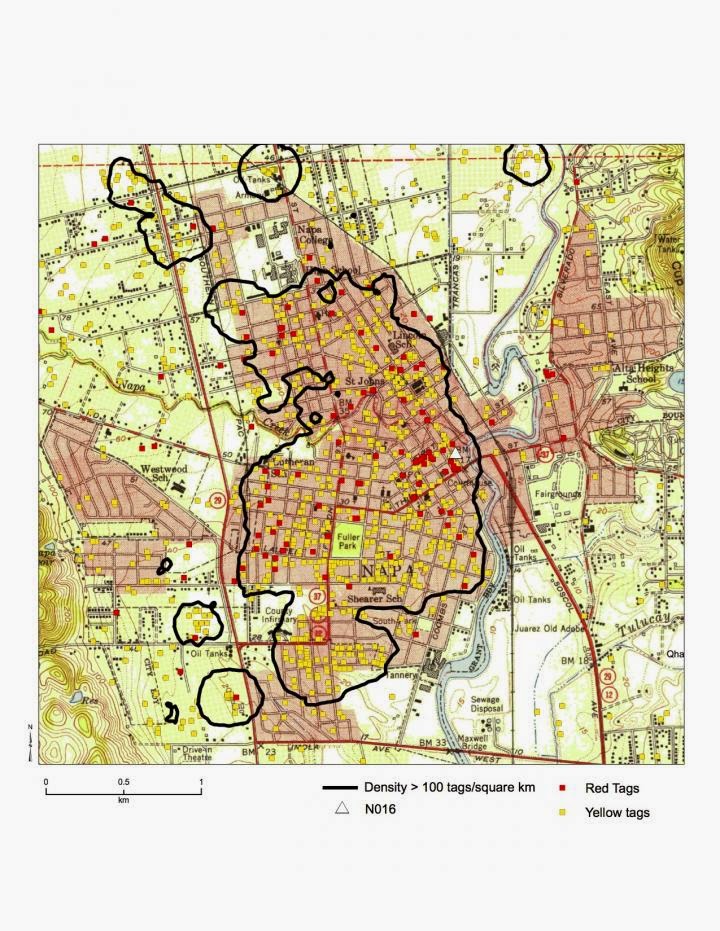
SAN FRANCISCO–An analysis of buildings tagged red and yellow by structural engineers after the August 2014 earthquake in Napa links pre-1950 buildings and the underlying sedimentary basin to the greatest shaking damage, according to one of six reports on the Napa quake published in the March/April issue of Seismological Research Letters (SRL).
“This data should spur people to retrofit older homes,” said John Boatwright, a geophysicist with the U.S. Geological Survey (USGS) in Menlo Park and the lead author of a study that analyzed buildings tagged by the City of Napa.
The South Napa earthquake was the largest earthquake to strike the greater San Francisco Bay Area since the magnitude 6.9 Loma Prieta earthquake in 1989, damaging residential and commercial buildings from Brown’s Valley through historic downtown Napa.
“The larger faults, like the San Andreas and Hayward faults, get the public’s attention, but lesser known faults, like the West Napa fault, can cause extensive damage. Unreinforced brick masonry and stone buildings have been shown to be especially vulnerable to earthquakes,” said Erol Kalkan, a research structural engineer at USGS and guest editor of the SRL special issue, which features six technical reports that cover different aspects of the magnitude 6.0 South Napa earthquake on August 24, 2014.

The South Napa earthquake occurred on the West Napa Fault system, a recognized but poorly studied fault lying between the longer Rodgers Creek and Green Valley faults, and caused strong ground motions, as detailed in the paper by Tom Brocher et al. The mapped surface rupture was unusually large for a moderate quake, extending nearly eight miles from Cuttings Wharf in the south to just west of Alston Park in the north.
An extensive sedimentary basin underlies much of Napa Valley, including the City of Napa. The basin, which may be as much as 2 km deep beneath the city, appears to have amplified the ground motion. A close look at the damaged buildings within the city revealed a clear pattern.
“Usually I look to certain factors that influence ground motion at a specific site – proximity to the fault rupture, directivity of the rupture process and the geology underneath the site,” said Boatwright. “The source distance and the direction of rupture did not strongly condition the shaking damage in Napa.”
Boatwright et al., analyzed data provided by structural engineers who inspected and tagged damaged buildings after the earthquake. The 165 red tags (prohibited access) and 1,707 yellow tags (restricted access) stretched across the city but were primarily concentrated within the residential section that lies between State Route 29 and the Napa River, including the historic downtown area.
When comparing the distribution of red and yellow-tagged buildings to the underlying sedimentary basin, to the pre-1950 development of Napa and to the recent alluvial geology of Napa Valley, the most severe damage correlates to the age of the buildings–pre-1950 construction–and their location within the basin. Less damaged areas to the east and west of central Napa lie outside of the sedimentary basin, and the moderately damaged neighborhoods to the north lie inside the basin but are of more recent construction.
Although the city’s buildings suffered extensive damage, there were few reports of ground failure, such as liquefaction and landslides. Brocher et al. suggest the timing of the earthquake near the end of the dry season, the three-year long drought and resulting low water table inhibited the liquefaction of the top layers of sandy deposits, sparing the area greater damage.
Note : The above story is based on materials provided by Seismological Society of America.










